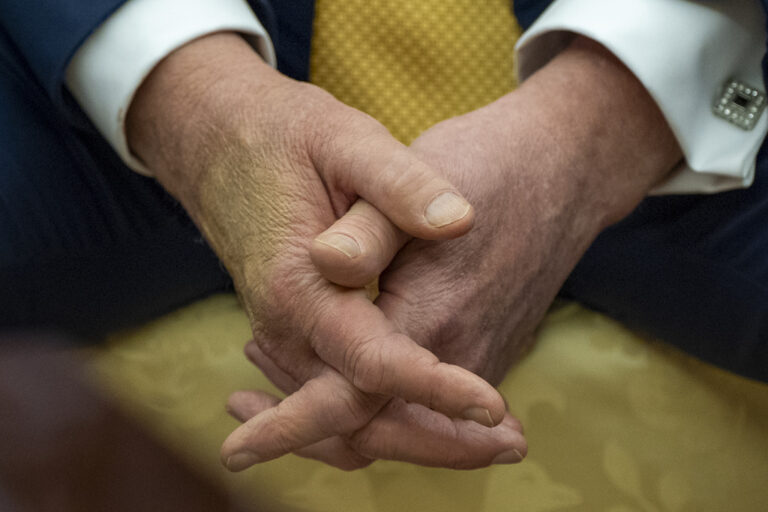New York’s health care industry is waiting with some trepidation to see how Gov. Andrew Cuomo intends to plug an over $8 billion hole in the state’s Medicaid program.
The Democrat is expected to release his annual budget proposal in the next two weeks, and the stickiest issue he has to address will be how to curtail spending on the program, which last year soared over its budget.
New York’s Medicaid program is the nation’s largest, serving over 6 million people or about one in three New Yorkers. Cuomo first went after rising costs in 2011. Reforms to the program helped stem spending from 2011 to 2015, according to the Citizens Budget Commission. But spending growth has ballooned since spring 2018 as more and more New Yorkers sign up for longterm care services and the state’s minimum wage has gone up.
New York has no plans yet to address a $1.7 billion gap through March alone. And the state faces a $6.7 billion hole over the next fiscal year starting in April.
Democratic legislative leaders have said they want to address the deficit, but without cutting services to vulnerable New Yorkers. Health care providers are also hoping to avoid cuts to their payments under the program, which reimburses hospitals, nursing homes and other facilities for care provided to the poor. When the state cuts Medicaid payments, providers are hit twice as hard because the state also loses out on federal matching Medicaid funds.
“The state already underpays providers for the healthcare services they deliver and we simply cannot balance the state budget on the back of struggling healthcare providers,” said Bea Grause, president of the Healthcare Association of New York State.
In his State of the State address Wednesday, Cuomo noted that Medicaid spending growth was a problem, but didn’t immediately detail proposed solutions. He hinted that one potential reform is overhauling how local governments get reimbursed for their share of the program’s bills.
Under Cuomo’s 2011 Medicaid reforms, the state has long agreed to pay a large share of those bills. Details on how that might change are likely to be included in Cuomo’s budget proposal due Jan. 21.
Secretary to the Governor Melissa DeRosa said this week that Cuomo’s efforts meant the state lost control of how local governments run Medicaid.
It’s not the first time that Cuomo has spoken of big deficits in his annual address: The governor last year blamed federal cuts to the program for a $4 billion budget deficit. He also submitted and withdrew a proposed $500 million across-the-board Medicaid cut last spring.
This year’s deficit — largely fueled by Medicaid — has led to Cuomo’s administration New Years’ Eve announcement of a 1% cut in Medicaid payments affecting hospitals, nursing homes and home-care providers. That cut partly reversed rate increases granted in 2018 for some providers.
“The state budget should not repeat last year’s action, which produced a budget that was unrealistic and opaque,” the Citizens Budget Commission said in a statement.
Larger-than-expected Medicaid bills led Cuomo’s administration to delay $1.7 billion in Medicaid payments last spring and push them into the 2020 budget. The governor’s office has said his administration plans to again delay $2.2 billion in Medicaid payments into the budget ending in 2021.
But such steps alone won’t fix the Medicaid deficit of over $8 billion through spring 2021.
DeRosa said the governor wants to take another look at reforming Medicaid this year.
Health care providers worry that drastic future Medicaid cuts are on the way.
Bryan O’Malley, executive director of the Consumer Directed Personal Assistance Association of New York, said providers and Medicaid recipients shouldn’t bear the brunt of the state’s failure to anticipate the ballooning budget gap. He met with Cuomo budget officials Friday and said the state could save $175 million alone in Medicaid through changes like allowing personal aides to transport Medicaid patients.
“The state certainly has enough data that it shouldn’t have taken anyone by surprise,” he said. “We should have planned for this several years ago.”
A spokesman for the association representing New York counties said the group hopes to work with the state to create a “more fiscally sustainable Medicaid program.”
Cuomo isn’t expected to propose a new tax on the wealthy demanded by left-leaning groups who criticize Cuomo’s “austerity” approach to Medicaid.
Senate Democratic Leader Andrea Stewart-Cousins has repeatedly said raising taxes isn’t her priority. Leaders of New York’s health plans, meanwhile, worry the state will expand existing taxes on insurance to plug the gap.
“For the last several years, our member health plans have been operating on extremely thin margins in the Medicaid program,” said Eric Linzer, president & CEO of the New York Health Plan Association.
(AP)











